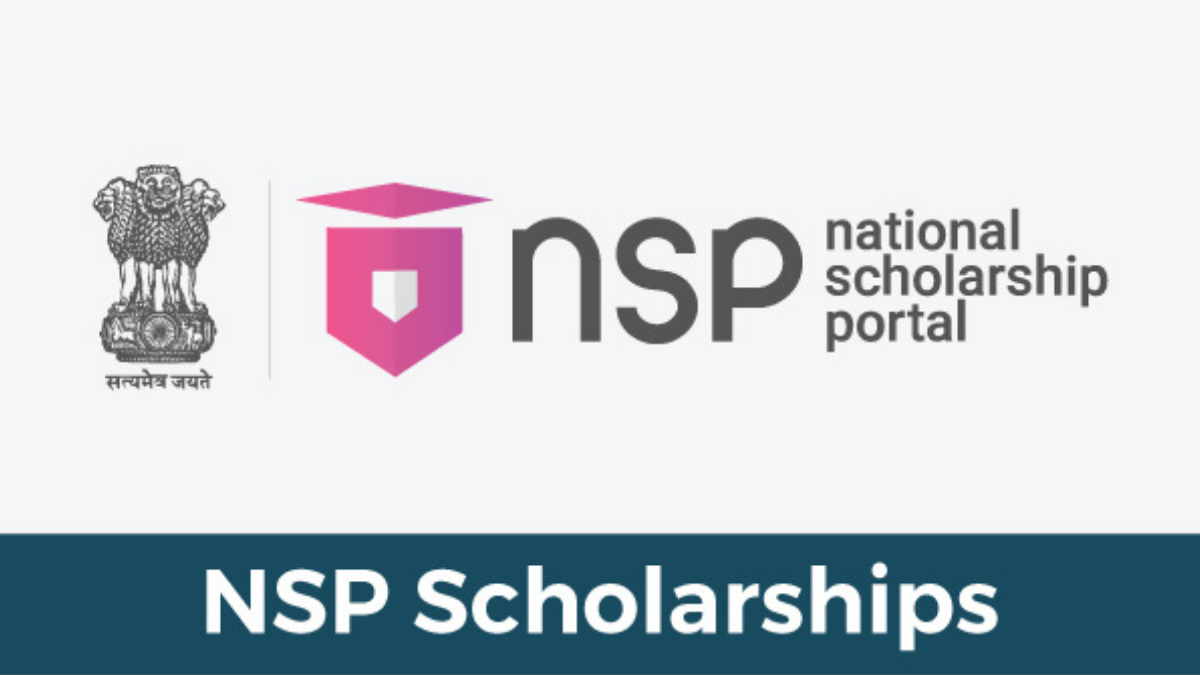The National Scholarship Portal (NSP) has emerged as a lifeline for millions of Indian students seeking financial assistance for their education. With the 2025 academic session bringing new opportunities and extended deadlines, understanding how to navigate this comprehensive scholarship ecosystem can make the difference between pursuing your educational dreams and abandoning them due to financial constraints.
Whether you’re a first-time applicant or looking to renew your existing scholarship, the NSP offers multiple pathways to educational support across various categories including pre-matric, post-matric, and merit-based schemes. The portal serves students from diverse backgrounds, including those from minority communities, SC/ST categories, OBC groups, and economically weaker sections.

This comprehensive guide will walk you through everything you need to know about NSP scholarships in 2025, from application procedures to renewal processes, ensuring you don’t miss out on the financial support that could transform your educational journey.
Understanding the National Scholarship Portal
The National Scholarship Portal represents the Indian government’s ambitious Digital India initiative, serving as a centralized platform for scholarship distribution across multiple ministries and departments. Launched as a Mission Mode Project, NSP aims to create a SMART system Simplified, Mission-oriented, Accountable, Responsive, and Transparent for efficient scholarship disbursement.
The portal manages scholarships from ten major departments, including the Ministry of Minority Affairs, Department of Social Justice & Empowerment, Ministry of Tribal Affairs, and the All India Council for Technical Education (AICTE). This unified approach eliminates the need for students to navigate multiple application systems, streamlining the entire process under one digital roof.
Through Direct Benefit Transfer (DBT), NSP ensures that scholarship funds reach students’ bank accounts directly, minimizing leakages and bureaucratic delays that previously plagued the system. The platform processes applications from over 100 different scholarship schemes, making it the largest educational support network in India.
Key Dates and Deadlines for NSP Scholarship 2025
The 2025 academic session brings important timeline updates that all applicants must note. Applications for most central sector schemes opened on June 2, 2025, with the general deadline set for October 31, 2025. However, specific schemes may have different cut-off dates, making it crucial to check individual program requirements.
For renewal applications, the government has extended the deadline to August 31, 2025, providing relief to thousands of existing beneficiaries. This extension addresses previous concerns about insufficient time for document collection and institutional verification processes.
The verification timeline has also been restructured to ensure smoother processing. Institute verification must be completed by September 10, 2025, followed by district and state-level verification by September 15, 2025. Final approval by NSP is scheduled for September 20, 2025, allowing adequate time for fund disbursement before the academic year progresses significantly.
Major Scholarship Schemes Available in 2025
Central Sector Schemes
The Department of Higher Education manages the Central Sector Scheme of Scholarships for College and University Students, targeting meritorious students from economically disadvantaged backgrounds. This scheme provides substantial financial support for undergraduate and postgraduate studies across recognized institutions.
The Ministry of Tribal Affairs offers the National Fellowship and Scholarship for Higher Education of ST Students, formerly known as the Top Class Education scheme for Schedule Tribe students. This program focuses on supporting tribal students in pursuing higher education in premium institutions.
Merit-Based Programs
The National Means-cum-Merit Scholarship, administered by the Department of School Education & Literacy, targets students transitioning from Class 8 to higher secondary education. This scheme combines academic merit with economic need, ensuring that talented students from lower-income families can continue their education.
The Prime Minister’s Scholarship Schemes cover multiple categories, including wards of Central Armed Police Forces, state police personnel martyred during terror attacks, and railway employees. These schemes recognize the sacrifices made by service families while supporting their children’s educational aspirations.
Technical Education Support
AICTE manages several specialized schemes designed for technical education. The Pragati Scholarship supports girl students pursuing technical degrees and diplomas, addressing gender disparities in engineering and technology fields. The Saksham Scholarship focuses on specially-abled students, ensuring inclusive access to technical education.
The Swanath Scholarship scheme provides support for economically disadvantaged students in technical programs, while the PM USP Special Scholarship specifically targets students from Jammu, Kashmir, and Ladakh regions.

Application Process: Step-by-Step Guide
One-Time Registration (OTR)
Before applying for any scholarship, students must complete the One-Time Registration process on the NSP portal. This registration creates a unique profile containing personal details, educational background, and family information that can be used across multiple scholarship applications.
The OTR process requires accurate information entry, as any discrepancies can lead to application rejection during verification stages. Students must provide valid Aadhaar numbers, bank account details, and mobile numbers that will remain active throughout the application process.
Document Preparation
Successful NSP applications require careful document preparation. Essential documents include educational certificates, income certificates, caste certificates (where applicable), domicile certificates, and recent passport-sized photographs. All documents must be scanned in prescribed formats and sizes to ensure proper upload.
Income certificates must be recent and issued by competent authorities as specified in scheme guidelines. For renewal applications, mark sheets showing promotion to the next academic level are mandatory, along with bonafide certificates from current institutions.
Online Application Submission
After OTR completion, students can access specific scholarship application forms through the NSP portal. The application process involves selecting the appropriate scheme, filling in required details, uploading documents, and submitting the complete application before the deadline.
Students receive unique application IDs upon successful submission, which should be preserved for future reference and tracking purposes. The portal allows applicants to track their application status throughout the verification and approval process.
Renewal Process for Existing Beneficiaries
Who Needs to Renew
Students who received NSP scholarships in the previous academic year must complete the renewal process to continue receiving benefits. Renewal is mandatory for progression to higher classes or academic levels, regardless of the original scholarship category.
Renewal eligibility requires passing the previous academic year with minimum prescribed marks and enrollment in a recognized institution registered on the NSP portal. Students who change institutions must update their details and ensure the new institution is NSP-registered.
Extended Renewal Timeline
The government’s decision to extend renewal deadlines to August 31, 2025, addresses practical challenges faced by students and institutions. This extension provides adequate time for document collection, mark sheet procurement, and institutional verification processes.
The extended timeline particularly benefits students from remote areas who may face delays in obtaining required certificates from government offices. It also accommodates institutions that need additional time for verification due to high application volumes.
Common Renewal Mistakes to Avoid
Renewal applications often face rejection due to preventable errors. Using different mobile numbers or bank accounts than the previous year can cause verification failures. Students must ensure consistency in personal details across renewal applications.
Incomplete document uploads represent another common pitfall. Updated mark sheets, current year bonafide certificates, and recent photographs are essential for successful renewal processing. Missing any required document can result in application rejection without opportunity for correction.
Benefits and Impact of NSP Scholarships
Financial Support Categories
NSP scholarships provide comprehensive financial support covering tuition fees, examination fees, books and stationery costs, and maintenance allowances. The support structure varies by educational level, with higher amounts for postgraduate and professional courses.
Pre-matric scholarships typically cover basic educational expenses, while post-matric schemes provide substantial support for higher education costs. Merit-based scholarships often include additional benefits such as laptop allowances or special coaching support.
Direct Benefit Transfer System
The DBT mechanism ensures scholarship funds reach beneficiaries’ bank accounts directly, eliminating intermediary involvement and reducing corruption possibilities. This system has significantly improved fund delivery efficiency and transparency.
Students receive SMS notifications when funds are credited to their accounts, providing real-time updates on scholarship disbursement. The system also maintains detailed transaction records, enabling easy tracking and audit processes.
Long-term Educational Impact
NSP scholarships have demonstrated measurable impact on educational outcomes across beneficiary communities. Studies indicate higher retention rates among scholarship recipients, with reduced dropout rates particularly notable in economically disadvantaged groups.
The scholarship support enables students to focus on academics rather than financial concerns, leading to improved academic performance and higher completion rates in professional courses. This educational advancement translates into better employment opportunities and economic mobility for beneficiary families.
Frequently Asked Questions
Q. What happens if I miss the application deadline?
A. Missing the application deadline typically means losing eligibility for that academic year’s scholarship support. NSP generally does not accept late applications after final cut-off dates, making timely submission crucial for all applicants.
Q. Can I apply for multiple scholarships simultaneously?
A. Students can apply for multiple NSP scholarships, but they can only receive benefits from one scheme at a time. The portal automatically identifies multiple applications and processes the most beneficial option for the student.
Q. How do I track my application status?
A. The NSP portal provides a tracking facility where students can monitor their application progress using their unique application ID and registered mobile number. Regular status updates are also sent via SMS to registered mobile numbers.
Q. What should I do if my application is rejected?
A. Rejected applications typically include specific reasons for rejection in the status update. Students should address these issues and reapply if the deadline has not passed. Common rejection reasons include incomplete documents or eligibility mismatches.
Q. Is there any application fee for NSP scholarships?
A. All NSP scholarship applications are completely free of charge. Students should be wary of any requests for application fees, as these likely represent fraudulent activities not associated with the official NSP portal.
Maximizing Your Scholarship Success
Success in NSP scholarship applications requires strategic planning and attention to detail. Start the application process early to allow sufficient time for document collection and verification. Maintain organized records of all educational and personal documents throughout your academic journey.
Stay updated with scheme-specific guidelines and requirements, as these may change between academic years. Regular visits to the official NSP website and following official social media channels can provide timely updates about new schemes or deadline extensions.
Build relationships with your institution’s nodal officers who handle NSP verifications. These officials play crucial roles in the application process and can provide valuable guidance about institution-specific requirements and procedures.
Consider the NSP scholarship program as part of your broader educational financing strategy. While scholarships provide significant support, planning for additional funding sources ensures educational continuity even if scholarship support faces delays or interruptions.
The National Scholarship Portal represents more than just a funding mechanism it embodies India’s commitment to educational equity and accessibility. By understanding and effectively utilizing this system, students can transform their educational aspirations into achievable realities, contributing to both personal growth and national development.
Click HERE For More.
